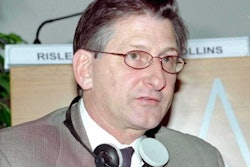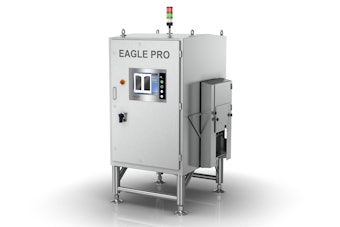Editor’s Note: This is the first in a three-part series of articles that explores strategies for sustainability. Part One describes the environmental, social, and economic issues pushing the supply chain to sustainability. Part Two, in the March issue, examines internal and external strategies for implementing sustainable programs.
The final installment in April presents the experiences of packagers currently implementing sustainable programs. The author wishes to thank the Sustainable Packaging Coalition and its members for their generous assistance during the research and writing of these articles.
The oil price and scarcity shocks of 2005 accelerated an already growing interest in alternatives to packaging materials reliant on petroleum. A close examination of current environmental, social, and economic trends indicates that energy and material costs are parts of a much larger issue, namely creating a sustainable future for packaging.
“There is a very broad interest in sustainability today,” says Anne Johnson, director, Sustainable Packaging Coalition, a project of the not-for-profit organization GreenBlue. “Companies are concerned with the issues of risk, access to raw materials, and energy costs. Many companies have broad sustainability agendas and within those agendas have identified specific areas they consider important. Packaging is often one of those areas.”
Compliance with pollution and waste disposal regulations is one of the most significant factors pushing the industry toward sustainability. For example, in 1994 the European Union (EU) issued a directive on packaging and packaging waste that sets recovery targets, which are revised every five years. By December 31, 2008, Europeans must recover 60 percent of all packaging waste and have an overall recycling level of 55 percent. The EU directive is a “producer responsibility” measure—producers have to meet the costs of achieving these targets. In the United Kingdom, any company involved in the packaging supply chain that has annual revenue greater than $3.46 million (£2 million) or handles 50 tons of packaging each year is legally bound by the directive.
“We saw the handwriting on the wall when the packaging and packaging waste directive was issued in 1994,” says Doug Marcero, corporate director, Health Management & Products Stewardship at paperboard supplier MeadWestvaco. “Our multi-national customers are definitely taking a greater interest in end-of-life issues because of this.”
John Delfausse, vice president of Packaging Development Aveda, The Estee Lauder Companies, says, “The industry is being driven in a lot of ways by compliance. Estee Lauder is a global company and if we do something in Europe, we have to do it in Asia and the U.S.A. as well.”
Another example is the Kyoto Protocol, an international effort to lower global greenhouse emissions. Strictly speaking, Kyoto isn’t a packaging mandate nor does the treaty impact American companies because the U.S. government refused to sign the agreement. Yet leading American companies are working toward compliance, which if not today, in the future will be enterprise wide. “Global warming is a real issue,” says Ed Klein, vice president Public and Environmental Affairs at Tetra Pak, a maker of foil/paperboard materials widely used in aseptic juice boxes. “We are looking at every aspect of curbing greenhouse gas emissions from production to transportation.”
Global approach
Global companies and their supply chain partners are not going to have different systems for each region they operate in or necessarily feel they can ignore compliance issues outside of their home base. Since every region of the world is grappling with pollution and packaging disposal issues, it is clear that more regulations like the 1994 EU directive and Kyoto are on the way. It is also clear that getting ahead of the compliance curve will convey a competitive advantage for the early adopters.
These laws are also a reflection of the public’s growing concern for responsible corporate governance. Each year an increasing number of corporations issue a Corporate Social Responsibility (CSR) or Sustainability report. CSR reports deal with various corporate citizenship issues, which can range from community investment, workplace initiatives, and health and wellness programs, to the supply chain and its impact on the environment and overall performance in health and safety. Corporate leaders understand that consumers have a choice. Those corporations with poor labor or environmental practices run the risk of being pilloried in public with a consequent erosion of customer goodwill. The way the supply chain handles packaging—from responsible harvesting of fiber in certified forests, to decreasing greenhouse gas emissions, to delivering recoverable materials—is a CSR issue.
“Companies do not want any issues in the supply chain that potentially hurt their reputation,” says Graham Houlder, Global Packaging coordinator—Foods, Unilever. “It is no longer only about making money. Corporate direction is also related to bringing something back to society. Positive CSR has the power to influence consumers.”
John Bernardo, resource conservation manager at Albertson’s, a chain of supermarkets, adds, “Retailing is very competitive. Anything we can do to make the customer aware that Albertson’s is minimizing the negative impact on the local community by specifying materials that are renewable or by reducing landfill volume and hauling rates provides us with a competitive edge.”
Compliance issues are rooted primarily to the environment. CSR issues are social. Economics plays a sizeable role in the trends pushing sustainability. It is an undisputable fact that non-renewable energy and other natural resources are becoming scarcer and more costly. The cost of air, water, and waste pollution controls are on the rise. Companies that put unsafe products on the market or into the environment run potentially disastrous liability risks.
On the other hand, corporations that increase the use of renewable energy and materials, reducing their operational impact on the environment, and seek to improve end-of-life package recovery and recycling will be strengthening their competitiveness and in all probability lowering their total costs.
As Delfausse says, “The priority at Aveda has always been environmental first. We’re able to and willing to spend a little bit more money to get the right package. I find that when we design for the environment, we can actually save money.”
“Anything Albertson’s can do to reduce costs and increase revenue is valuable,” Bernardo observes. “Using packaging or specifying packaging that is reusable or recyclable directly impacts our bottom line.”
“You cannot have a fully sustainable package unless it is made from renewable resources,” says Tetra Pak’s Klein.
Houlder adds, “Many of the factors of sustainability make sound business sense. I see the move toward sustainability increasing.”
Staying ahead of the compliance curve, being socially responsible, and potentially lowering total costs are strong motivators for adopting a sustainable packaging strategy. What does a sustainable strategy entail?
Sustainability in practice
Sustainable packaging begins with the choice of materials for the package and a considered movement away from non-renewable to renewable and recycled materials. This choice of materials involves an analysis of potential impacts on the environment and on the public’s health and safety.
“You can build up a simple checklist for developers to go through,” says Delfausse. “Have the designers ask questions about what happens to the package when the retailer or consumer is done with it. This starts to bring the sustainability mindset into action for the designers. You can also create a preferred materials list that indicates various environmental and health impacts. The Environmental Defense MERGE software tool, (www.environmentaldefense.org/alliance/merge/Merge.htm) for example, helps designers incorporate environmental considerations into the design of formulated products and packaging.”
Sustainability may begin with materials used and functionality of the package, but it quickly widens to embrace solutions for end-of-life recovery, reuse, or disposal. Scott Ballantine, Packaging Project Manager, Microsoft, suggests that designers concerned about sustainability consider such end-of-life questions as:
• Does the design lend itself to reducing the retailer’s disposal cost?
• Does the package clearly describe recycling information for the consumer?
• Can the package be separated, recovered, and recycled cost effectively using current methods of recycling?
• Is there the possibility of composting either commercially or by homeowners?
• If incinerated, what effects will it have on the quality of air, water, or soil?
Companies moving to sustainability also begin to consider the larger issue of the total economic, social, and environmental impact—for example, energy expended and greenhouse gases emitted—of producing a package, from source material to converting, packaging, transportation, recovery, and reuse. The ground-breaking 2002 book Cradle to Cradle: Remaking the Way We Make Things by William McDonough and Michael Braungart describes the framework for this ecologically and economically sustainable approach. The book inspires a lifecycle approach to sustainability.
“In the development of a package today it is important to show the company the total cost of various solutions and their environmental and sustainability impacts,” says Ballantine. “These packaging considerations should not stop with just looking at recycled content, print quality, eye appeal, and product protection. Collaborate with your supply chain, purchasing, transportation, and marketing groups. Review where the product is going to be manufactured, where it is shipping to, how stores are going to stock and present your product to customers, and consider the end-of-life packaging fees and recovery strategies. Seek win-win solutions meeting your sustainable packaging goals as well as your teammates’ other objectives. Constant collaboration is key and is helping us achieve this at Microsoft.”
Examining the footprint
Unilever’s Houlder advises packaging managers to examine the environmental, social, and economic footprint of the package and strive to minimize it. In the process, they should actively seek the involvement of internal and external partners.
Sustainable packaging is also concerned with decreasing dependence on non-renewable energy. “One of the ways Tetrapak can reduce our reliance is to improve our energy efficiency,” says Klein. “Energy use at our plants has been reduced by about 15 percent, and we plan on an additional 10 percent reduction. Our packaging requires fewer trucks, decreases fuel costs, and lowers emissions not only for ourselves, but also for our customers and retailers.”
Sustainability programs also give serious consideration to alternative fuels for transportation as well as for incorporating—now and in the future—such alternative energy sources as solar, wind, waste-heat recovery, and hydroelectric power.
Beyond an emphasis on materials, design, renewable energy, and process optimization, sustainability in packaging brings companies in the packaging supply chain closer together—to work and learn from one another. Collaboration is one of the main functions of the Sustainable Packaging Coalition, which is dedicated to sharing best practices and design guidelines, supporting innovation, and providing educational resources and tools. Coalition members are the first to say that no company has all the answers. They are all at the beginning of their journey, and they accelerate the move to sustainability through joint discussions.
Late last year, The Sustainable Packaging Coalition and its members developed a comprehensive definition of sustainable packaging that is available for download, www.sustainablepackaging.org. The executive summary states that sustainable packaging:
• Is beneficial, safe, and healthy for individuals and communities throughout its life cycle;
• Meets market criteria for performance and cost;
• Is sourced, manufactured, transported, and recycled using renewable energy;
• Maximizes the use of renewable or recycled source materials;
• Is manufactured using clean production technologies and best practices;
• Is made from materials healthy in all probable end-of-life scenarios;
• Is physically designed to optimize materials and energy;
• Is effectively recovered and utilized in biological and/or industrial cradle-to-cradle cycles.
“The definition has different meanings for each company in terms of which things to emphasize because no one company is doing it all,” says coalition member Klein. “Tetra Pak, for example, is going to emphasize renewable resources. Others like Aveda will emphasize recycled content.’
MeadWestvaco’s Marcero provides this insight. “It is increasingly important that everyone in the supply chain work together,” he says. “Through close supply chain collaboration—by looking at innovative materials, converting them responsibly, and making packaging that meets both the specific need of the product and the wider need of the environment—this industry is going to be successful.”
Packaging is undergoing an evolutionary change from a time of abundant resources and cheap energy to an era of scarcer resources, higher energy costs, and a planetary ecosystem under threat. Companies in the packaging supply chain that begin moving in the sustainability direction are seeking to adapt and prosper in this emerging environment. Fundamentally, they are helping to sustain their own, as well as their customers’, future success.
See sidebar to this article: Microsoft Moves Toward Sustainability




























